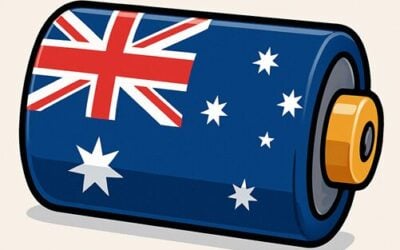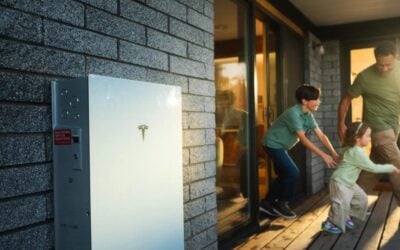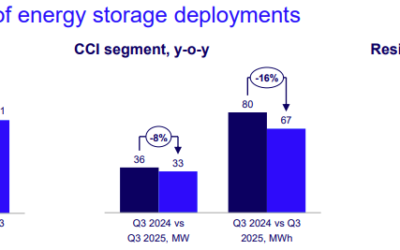Sunverge energy storage system. Image: Sunverge.
AGL Energy has invested US$20 million in energy storage manufacturer Sunverge, as Australia’s biggest utility set up a fund worth ten times that to help meet its climate change commitments.
The investment cements a deal between the two for AGL to be exclusive dealer for San Francisco-headquartered Sunverge’s energy storage systems in Australia. The two companies are also trialling the use of aggregated energy storage systems acting in concert to reduce peak demand across the network. This grid service is growing to be known as the ‘virtual power plant’ concept.
Other investors in Sunverge’s US$36.5 million series C funding round included the Australian Renewable Energy Agency, which said it has, together with investment house SB China Venture Capital, already put more than US$7 million into helping the US company establish itself in Australia. Also investing were Siemens Venture Capital and Total Energy Ventures International.
“Residential battery storage is currently in its infancy in Australia. While only a small number of systems are currently installed, there is a lot of interest in the technology,” ARENA CEO Ivor Frischknecht said.
Try Premium for just $1
- Full premium access for the first month at only $1
- Converts to an annual rate after 30 days unless cancelled
- Cancel anytime during the trial period
Premium Benefits
- Expert industry analysis and interviews
- Digital access to PV Tech Power journal
- Exclusive event discounts
Or get the full Premium subscription right away
Or continue reading this article for free
“The partnership between AGL and Sunverge will accelerate the roll out of a state-of-the art grid integrated battery storage solution to Australia’s large household storage market.”
Other utilities in Australia have invested in or have been trialling battery storage options, including three that are working with Panasonic. Meanwhile, virtual power plant projects have sprung up in various parts of the world, although in most regions the installed base of behind the meter solar-plus-storage is not large enough for the business case to stack up as yet. Energy Storage News writer Tom Kenning previously blogged on the value of beind-the-meter energy storage in Australia, including a focus on Sunverge and AGL’s trials as they began.
Utility trials of virtual power plants will be a space worth watching in energy storage this year, according to analyst Cosmin Laslau of Lux Research.
“[One of the things] that we’re really interested in [this year], is utilities laying the groundwork for virtual power plants,” Laslau said.
“For example, California utility SDG&E want to pay behind the meter customers for access to their batteries when they’re not using them. They want to aggregate the batteries in concert for grid needs.”
Some of Australia’s residential feed-in tariffs for solar, which vary across the different states, are beginning to expire. In part this has contributed to fears that a trend towards decline in new installations seen in 2015 could continue this year. However, as with Germany, many are seeing potential for homeowners to generate and self-consume their own PV power using energy storage.
A fairly comprehensive price comparison page on AGL Energy’s website compares two Sunverge systems and the AUO Powerlegato, all three of which the utility sells, against the basic spec of the Tesla Powerwall.
The Sunverge systems cost from AUS$19,900 or AUS$24,990 bundled, for a 11.6kWh or 19.4kWh system respectively, versus what AGL says is the Australian market bundled price of a 7kWh Powerwall, upwards of AUS$17,250. Meanwhile AUO’s Powerlegato bundle starts at AUS$12,990 for a 7.2kWh system. Unlike the Tesla or AUO devices, which can power household devices on their own for around two hours, the Sunverge SIS 11.6, 11.6kWh device, designed to be paired with a 4.5kW solar system can run a home for three to nine hours, and the 19.4kWh SIS 19.4 can power a home for five to 15 hours, depending on household consumption.
ARENA’s Ivor Frischknecht (right), pictured at the launch of another virtual power plant trial, for utility Ergon Energy, last year. Image: ARENA.
The utility has also formed the Powering Australia Renewables Fund, announced yesterday, promising to develop 1,000MW of new renewables, equating to around AUS$2-3 billion of total investment. AGL will put AUS$200 million of its own money into the fund, and is seeking other investors for it.
AGL made international energy and climate news headlines in April last year when it castigated the government of then-prime minister Tony Abbott for its unwillingness to move towards decarbonisation.





